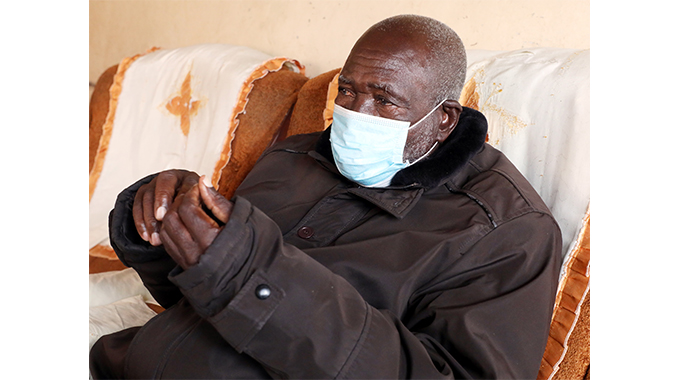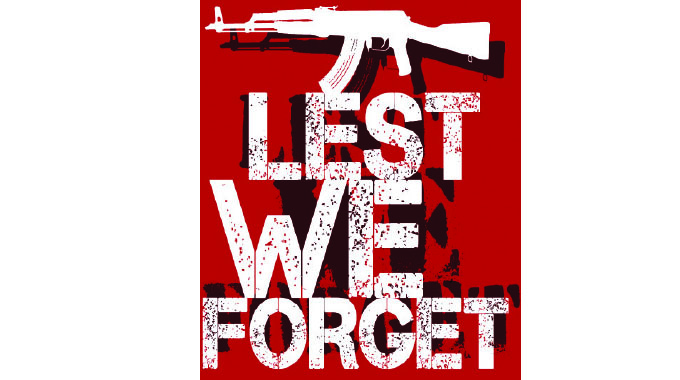
The Sunday News

WE continue our interview with pioneer freedom fighter Cde Moffat Hadebe pseudo name Cde Morris Dhlomo who in a series of interviews with our Assistant Editor Mkhululi Sibanda (MS) has among other issues spoken about his escape from Grey Prison (Bulawayo Prison), further military training in Algeria and deployment into then Rhodesia, leading the Pyramid Detachment in the Sipolilo (Guruve) Campaign in 1968.
The detachment comprised Zapu and ANC cadres. In the previous year Zapu and ANC had also engaged the Rhodesian and South African forces in the Wankie (Hwange) Campaign. Today Cde Hadebe takes us through the Sipolilo Campaign. Below are excerpts of the interview. Read on . . .
MS: You were talking about the presence of the joint High Command of ZPRA and Umkhonto WeSizwe, how long were they on the ground?
Cde Hadebe: They spent a week or so, then returned to Lusaka.
MS: Tell us about your operations.
Cde Hadebe: This unit under my command which became known as the Pyramid Detachment with a strength of 107 men, a majority of them from our side like I said before had engineering and reconnaissance units who had crossed before us. They had reconnoitred the locations and prepared hideouts and storage places for arms, ammunition and food. They had done a good job, that is why it took the Rhodesians forces about three months to find out that there were guerillas on the ground. We had arrived in January 1968 and they were to discover our presence around March.
In the first three months we were communicating well with our headquarters in Lusaka because our radio equipment manned by Cdes Duncan Khoza and Zilane was in excellent condition. Those comrades were also well trained and so through their expertise we were able to maintain regular contact with Lusaka.
MS: So, you guys you were deep in the forests?
Cde Hadebe: We had established our base on the uninhabited Zambezi Valley, in fact what we wanted to do was to establish a permanent infiltration route south of the escarpment. All this time we were setting the groundwork for the attack.
We then established four bases with Base One as the spot where we had our communications centre. The first three months were spent bringing in supplies such as food, ammunition and other logistics. But we had also sent a platoon to the villages to test the waters, to find out how the people would take us. Remember our people were not yet properly grounded in our revolution, many if not the majority were sceptical about our revolution, they did not see it coming that one day we could defeat the colonial government.
To many that was very impossible. That platoon that I had sent to give political orientation to the people was escorting my Chief of Staff, Kenneth Mzethi from MK, but the platoon was under the command of Cde Harry Mariri from our side. Cde Mariri being a Shona speaker made things easy, he could relate with the masses through language and cultural practices.
MS: So how was your presence spotted by the enemy?
Cde Hadebe: Our presence was detected by a game ranger as we were deep in a game park. The ranger might have found a spoor where it was not expected and there was the issue of the behaviour of the animals. The presence and movement of a large group of people where there was none before might have raised eyebrows and drawn attention of the authorities there.
The footprint was rare and distinctive because the boots given to the MK comrades had a figure of eight on the sole. Those boots were from the then Czechoslovakia. Those same prints had been identified by the colonial forces during the Wankie Campaign of the previous year. On the day we had contact with the Rhodesian forces they spotted fresh footmarks and followed the trail for some kilometres to our base. Earlier on a spotter plane had flown past our positions.
Then the enemy also started dropping troops a few kilometres from our positions. Since we were not at the same base, those comrades who had gone to the people on realising what was happening managed to slip through the enemy lines to where we were. They wanted to find out what was happening. We quickly organised defences and before that I had about 40 troops with me.
We had light machine guns with us. As I said before each section of nine, which was reinforced was armed with a machine gun, the detactarov also known as the Gronov. The first contact took place around the Chowero River, which we had followed when we realised that the enemy was tracing us. I deployed the platoon that was under the command of Mabhalane on the northern side. After the spotter plane the helicopters came from the easterly direction and that is where they were concentrated.
I had also ordered a guerilla to position himself on a tree to look out for the ground troops as we did not want any surprises. Indeed, the ground troops were spotted coming our direction and they entered our ambush positions, which had been well laid. The first section let them into the ambush position and that was a tactical move. That section had comrades like Makhosi Gandi.
MS: That’s interesting . . .
Cde Hadebe: You know those Rhodesian soldiers had no respect for guerillas, they thought they could just come and capture. They thought bangasibamba nje basifake emgodleni. It was around 12 noon when the first shots were fired. After being satisfied that they had entered the killing zone, we hit them. The Rhodesians might have been surprised with the accuracy of our firepower and also the way we had positioned ourselves. The machine guns and the AK-47s did their job.
I was armed with an AK-47 and a pistol. The Gronov did its job. I am sure we killed a lot of Rhodesians there. We have never faced battle before and the Rhodesians themselves had never faced guerillas who did not show them any respect. We were not intimidated at all.

All that had to do with the training we had received, we had comrades like myself who had received top-notch military training in countries such as Algeria, Cuba and the Soviet Union. On that battle I can say with pride, we won it. We did a lot of damage there. But we could not retrieve their equipment and count bodies because we could have exposed ourselves to their aircrafts. After engaging their ground force, they deployed their aircrafts and they started bombing the area.
They also attacked our supply unit that had comrades like Mbhejelwa Moyo. It was a unit of 25, there were heavy casualties there.
MS: So how long did your first battle last?
Cde Hadebe: After gunning down that ground force unit we retreated swiftly, in fact the battle lasted the whole afternoon. That is how the long drawn out Sipolilo (Guruve) Campaign started. What followed later were sporadic battles all over the place. The battles were concentrated in Mashonaland Central and West. In the days that followed the Rhodesians started employing a search and destroy tactic, forcing us to break into smaller units of around seven.
The continuous harassment then started taking a toll on us, we also had problems with communication.
To be concluded next week with Cde Hadebe talking about his capture with fellow guerilla Cde John Zvandanda by the Portuguese soldiers in Mozambique where they had retreated to. He will also take us through their trial where they were sentenced to life in prison.
At the attainment of Independence Cde Hadebe reveals that when political prisoners and captured guerillas were released from Khami Maximum Prison where he was kept, the authorities refused to sanction his release. He was the last one to walk out of Khami while others had long tasted their individual and national freedom. Don’t miss your copy.



